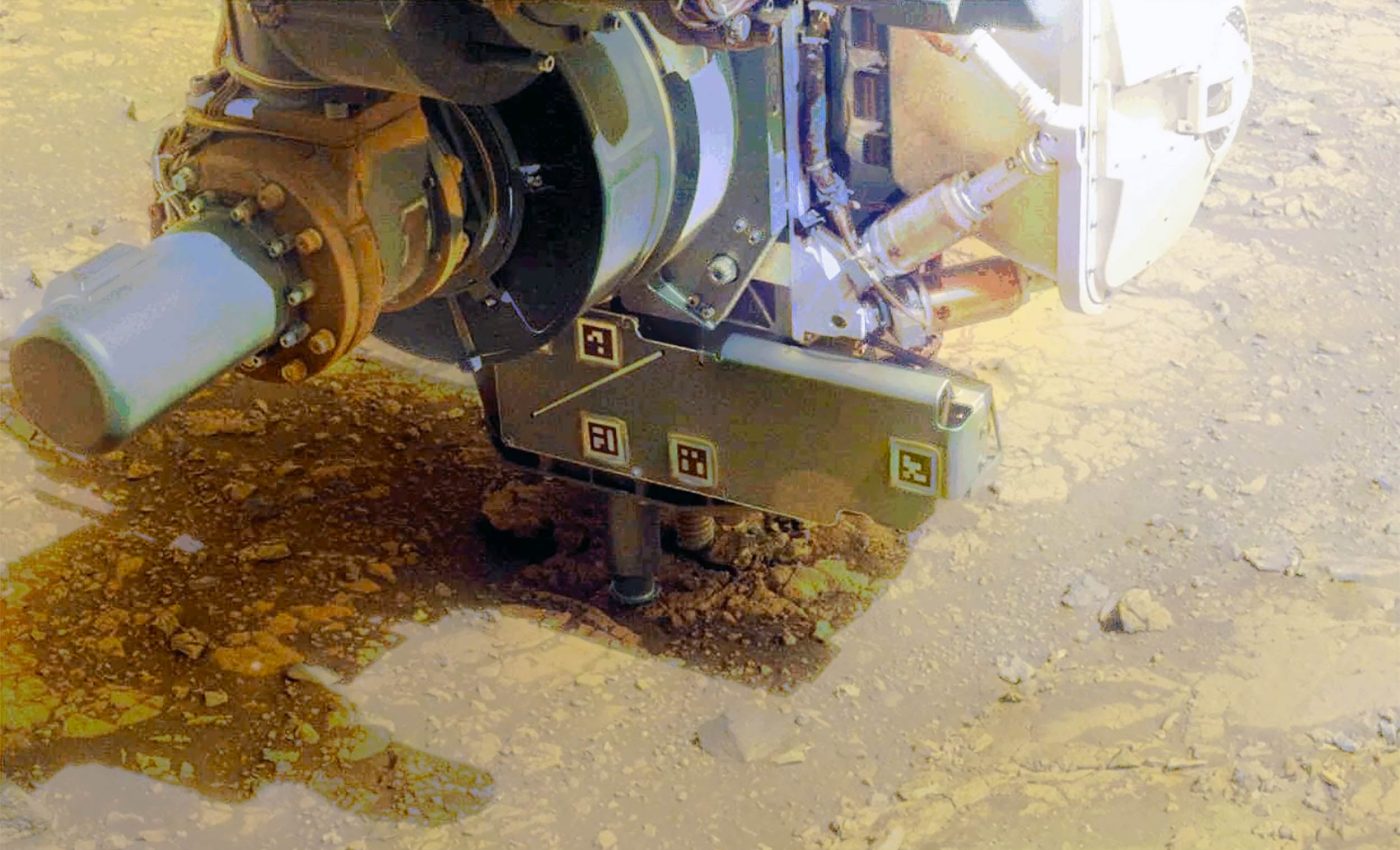
Uncovering the hidden story of Mars, one rock at a time
When it comes to exploring Mars, the surface is just the beginning. That’s why NASA’s Perseverance rover is doing more than just collecting core samples. It’s also grinding into Martian rocks to uncover secrets buried just beneath the dusty surface.
On June 3, Perseverance got to work on a stubborn rock the team has named “Kenmore.” The rover scraped away part of the surface, cleared off the debris, and took a closer look at what was inside.
With its sophisticated set of tools, the rover examined the rock’s minerals and geological features. Kenmore is the 30th rock to be studied this way, starting with a two-inch-wide abrasion patch.
Digging deeper into a difficult rock
Professor Ken Farley, a noble gas isotope geochemist at Caltech, is the deputy project scientist for the Perseverance mission. He noted that Kenmore was “a weird, uncooperative rock.”
“Visually, it looked fine – the sort of rock we could get a good abrasion on and perhaps, if the science was right, perform a sample collection,” said Professor Farley.
“But during abrasion, it vibrated all over the place and small chunks broke off. Fortunately, we managed to get just far enough below the surface to move forward with an analysis.”

Scientists are especially interested in getting past the outermost layers of Martian rocks, which are weathered and coated with dust.
Grinding helps expose the unaltered interior, giving a clearer picture of what the rock is made of. It also leaves behind a flat patch, perfect for close-up inspection with the rover’s instruments.
New approach to cleaning Mars rocks
Previous Mars missions like Spirit and Opportunity used spinning grinders with brushes to clean off rock surfaces. NASA’s Curiosity rover used wire bristles to sweep away dust. But Perseverance is taking a cleaner and more efficient approach.
Instead of brushes, Perseverance uses the gaseous Dust Removal Tool, or gDRT. It shoots out a blast of nitrogen gas to clear away debris left behind after grinding.
“We use Perseverance’s gDRT to fire a 12-pounds-per-square-inch (about 83 kilopascals) puff of nitrogen at the tailings and dust that cover a freshly abraded rock,” said Kyle Kaplan, a robotic engineer at NASA’s Jet Propulsion Laboratory in Southern California.
“Five puffs per abrasion – one to vent the tanks and four to clear the abrasion. And gDRT has a long way to go. Since landing at Jezero Crater over four years ago, we’ve puffed 169 times. There are roughly 800 puffs remaining in the tank.”
The gDRT is especially useful because it doesn’t touch the rock, which avoids the risk of bringing Earth contaminants into the mix.
Closer look with high-tech tools
Once the dust is blown away, Perseverance gets to work using a set of advanced sensors. A camera called WATSON takes close-up images from the rover’s robotic arm.
Then, from its mast, the SuperCam begins firing thousands of tiny laser pulses at the abraded area. Each laser shot kicks up microscopic particles, which are analyzed by a spectrometer.

“SuperCam made observations in the abrasion patch and of the powdered tailings next to the patch,” said team member Cathy Quantin-Nataf from the University of Lyon in France.
“The tailings showed us that this rock contains clay minerals, which contain water as hydroxide molecules bound with iron and magnesium – relatively typical of ancient Mars clay minerals. The abrasion spectra gave us the chemical composition of the rock, showing enhancements in iron and magnesium.”
Not all Mars rocks are created equal
The SHERLOC and PIXL instruments also studied Kenmore. They backed up SuperCam’s findings and added something new.
The tools detected feldspar – a mineral known for its bright appearance on the Moon. More notably, PIXL spotted a manganese hydroxide mineral. It’s the first time this kind of material has been found during the mission.
Now that Perseverance has wrapped up its work on Kenmore, the rover is heading off to explore more areas along the edge of Jezero Crater.
“One thing you learn early working on Mars rover missions is that not all Mars rocks are created equal,” said Farley. “The data we obtain now from rocks like Kenmore will help future missions so they don’t have to think about weird, uncooperative rocks.”
“Instead, they’ll have a much better idea whether you can easily drive over it, sample it, separate the hydrogen and oxygen contained inside for fuel, or if it would be suitable to use as construction material for a habitat.”
Breaking records on the Red Planet
On June 19 – mission day 1,540 – Perseverance set a new personal record. It traveled 1,348 feet (411 meters) in a single autonomous drive. That’s about 210 feet more than its previous record from April 2023.
While the science team selects the general path, the rover often drives itself using a system called AutoNav. This lets it move faster between areas of interest without waiting for every command from Earth.
“Perseverance drove 4½ football fields and could have gone even farther, but that was where the science team wanted us to stop,” said Camden Miller, a rover driver for Perseverance at JPL. “And we absolutely nailed our stop target location.”
“Every day operating on Mars, we learn more on how to get the most out of our rover. And what we learn today future Mars missions won’t have to learn tomorrow.”
To see more images and video of the “Kenmore rock” on Mars, click here…
—–
Like what you read? Subscribe to our newsletter for engaging articles, exclusive content, and the latest updates.
Check us out on EarthSnap, a free app brought to you by Eric Ralls and Earth.com.
—–













